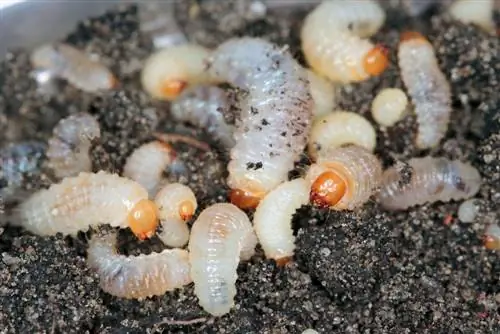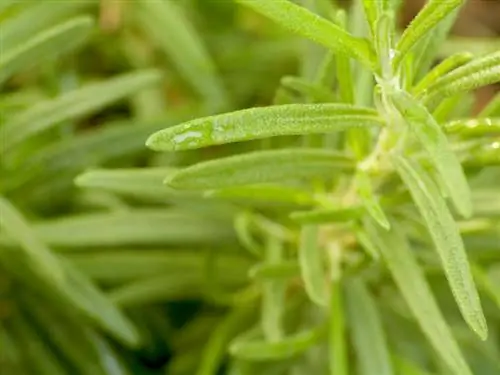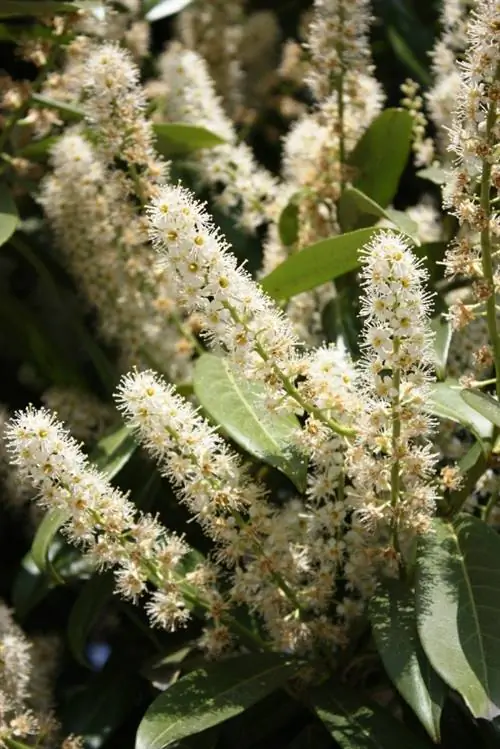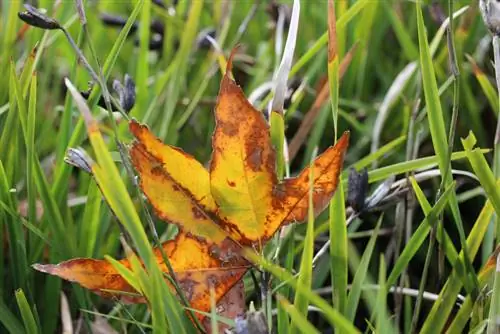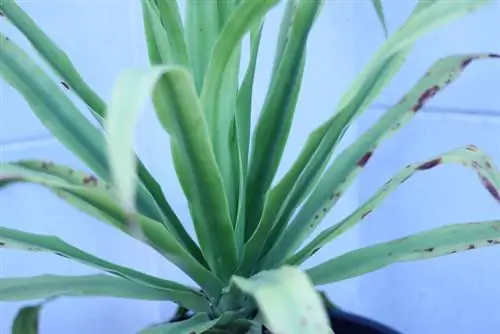- Author admin [email protected].
- Public 2023-12-16 16:46.
- Last modified 2025-01-23 11:22.
Even the adaptable and robust yew tree (Taxus baccata) is not immune to pest infestation. The tree, which is highly poisonous to us, is a special treat for the hungry larvae of the black weevil. How to recognize and combat an infestation.
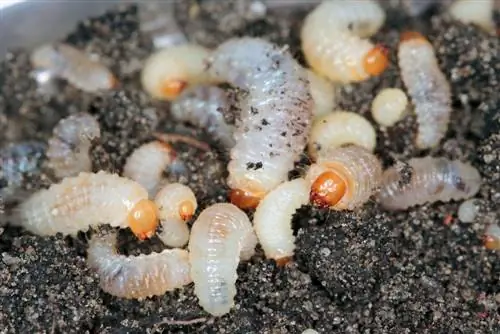
How do you recognize and control black weevils on yew trees?
An infestation of yew weevils is manifested by drying needles and dented roots. Roundworms (nematodes) can be used to combat this, which kill the larvae and do not harm the natural environment.
What damage does the black weevil cause to yew trees?
The thick larvae of the black weevil primarily eat the roots of infected yew trees (as well as other host plants such as rhododendrons or cherry laurel). The roots can be eaten away so badly that the affected tree can no longer find support in the ground and can fall over. You can recognize an infestation, for example, if the yew tree threatens to dry out despite sufficient water supply.
Another indication of a possible infestation can be needles that have been eaten into coves and damaged by the adult weevil. Bay feeding is a specific indication of the pest!
How do you know the black weevil and its larvae?
The black weevil is an approximately one centimeter long, grayish-colored beetle from the weevil family. The pest is nocturnal and hides during the day, so it is rarely seen.
You are more likely to discover the cream-colored larvae, which live underground in humus-rich, loose soil and are found, for example, when doing garden work. Incidentally, not only yew trees planted in the garden are at risk, but also plants cultivated in pots - the latter in particular, as the often nutrient-rich plant substrate offers the best conditions for the beetle and its offspring.
How can you successfully combat the pest?
Slight damage to the yew needles can generally be tolerated. However, under no circumstances can you ignore the larvae that destroy the root system. The best way to combat these is with roundworms (€5.00 on Amazon) (nematodes), which you can purchase from specialist retailers. The microscopically tiny animals are spread using a watering can at a soil temperature of more than 12 °C and cause the beetle larvae to die. A nematode of the species is particularly suitable for combating
- Heterorhabditis bacteriophora
- Steinernema kraussei
- Steinernema carpocapsae
Fighting pests with nematodes makes it possible to avoid insecticides and other pesticides. Instead, this method is gentle on beneficial insects, people and the environment.
Can infected yew trees regenerate?
In principle, infected yew trees can regenerate. However, you may have to cut back the affected tree severely - in the case of serious root damage, this is even necessary. Eventually, the remaining roots can no longer fully support the tree.
It also makes sense to use growth-promoting agents to accelerate root growth. To do this, you can water the yew tree, for example, with willow water or the cooking water from potatoes (cooled down, of course!). Yeast water (100 grams of yeast dissolved in one liter of water) also works well.
Tip
Various causes of brown needles
If the yew tree has brown needles and appears to be drying out, you should take a closer look. It is possible that it is not the black weevil, but another problem that is behind this phenomenon. The tree may be suffering from waterlogging (which causes the roots to rot) or a fungal disease. Other pests or sunburn - for example from too intense winter sun - are also possible causes.

